The history of aircraft construction in Bremen – Part 2: 1952 – 2024
AviationThe chronology of aviation in the Hanseatic city
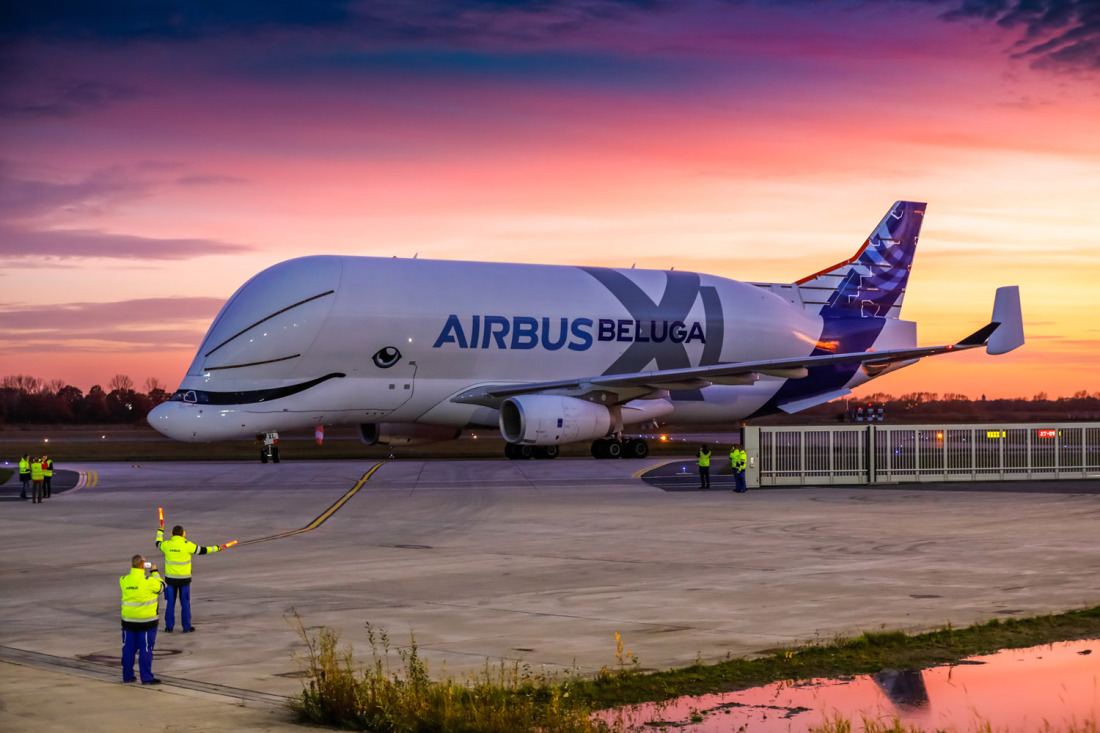
A century of aircraft construction in Bremen – in the post-war years, the "Airbus" project was emblematic of the history of the aviation industry in Bremen. It has been one of the Hanseatic city's most significant industrial sectors ever since.
But we should remember that other projects were also important: the development of helicopters, the VAK 191 vertical take-off aircraft and the VFW 614 short-haul aircraft. The 1970s were a time of crisis and also saw the birth of the Airbus Group.
In 2024, Bremen is celebrating "100 Years of Aircraft Construction" with a series of anniversary celebrations.The activities and events being held to mark the anniversary will not just attract specialists but also bring in aircraft enthusiasts from around the world.
We continue our chronology in the post-war years, in which aircraft construction in Bremen was still linked with the aviation tradition that had begun in the first half of the century (Part 1) but was also faced by new challenges.
The chronology of aircraft construction in Bremen, 1952 – 2024:
1952-1955
In the first few years after World War 2, the company Focke-Wulf began construction of high-performance Weihe 50 and Kranich III gliders, alongside production of household and other everyday appliances, as the building of engine-powered aircraft had been forbidden by the occupying powers, in Germany. That all changed in 1955, when the so-called General Treaty came into effect and Germany joined NATO. Soon after this, the newly founded Bundeswehr (German Federal Armed Forces) placed its first orders with Focke-Wulf for American aircraft types, that had been approved for the Bundeswehr.
And Weser-Flugzeugbau GmbH also resumed operation with maintenance and construction work (among other things for the Bundeswehr's F84/RF-84 fighter-bombers). Just two years later, several thousand people were being employed in the aviation industry in Bremen again.
1957
As part of the Federal Ministry of Defence initiative to revive the German aviation industry, Focke-Wulf was given responsibility for the construction and further development of the Italian Piaggio P149 D training and passenger aircraft. 190 aircraft were supplied to the German Airforce. The company Weser Flugzeugbau was given the job of bringing American Republic RF84 turbojets into service and maintaining them.
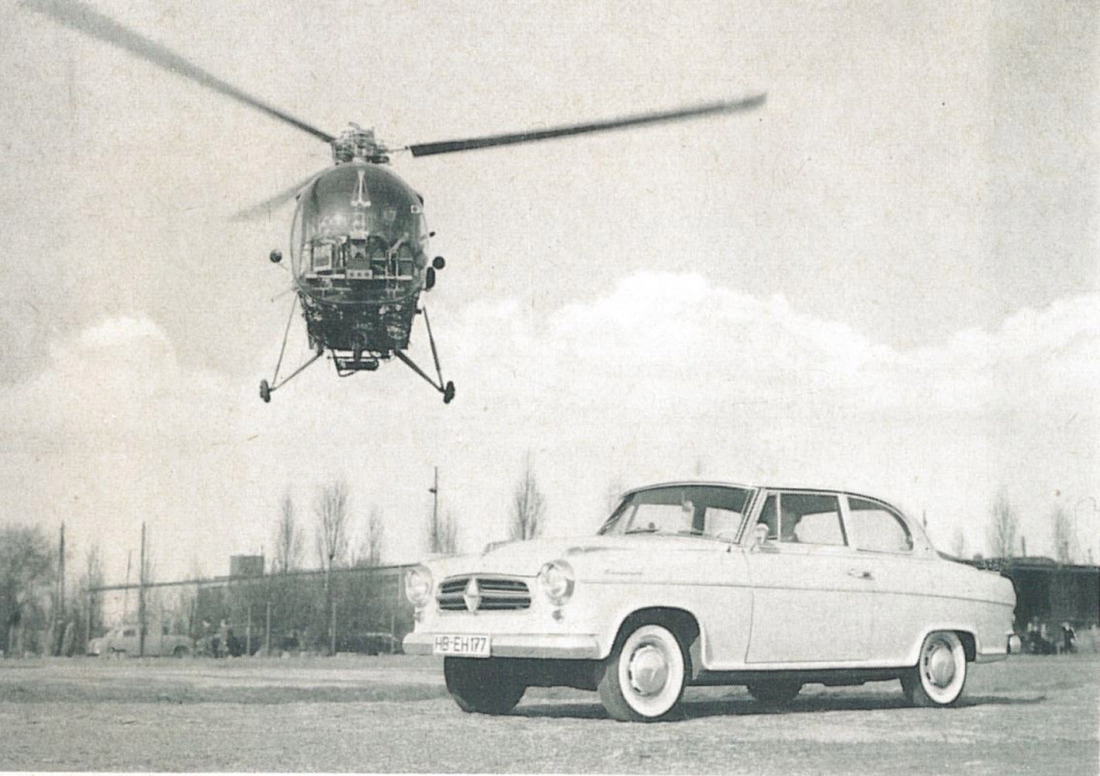
1958
First "Noratlas" transport plane handed over to the Bundeswehr. The French model was built under license by the companies Hamburger Flugzeugbau, Siebelwerke ATG and Focke-Wulf. To arrange this, they founded the "Arbeitsgemeinschaft Nord" (Northern Consortium) which was the model for the future development of German and European aircraft construction, involving joint multi-national, multi-company projects with geographically distributed production workshops.
The same year saw the first flight of the "Kolibri BFK-1", a multi-purpose helicopter designed by Henrich Focke on behalf of Carl Borgward and built in Borgward's car factory in Bremen. The helicopter was not developed beyond the prototype stage due to a lack of customer interest and the commercial difficulties of the Borgward Group, which was soon to go into insolvency.
Henrich Focke had previously been involved in helicopter development, with his team, in France, after the war. Later, this work was the basis for the "Alouette" helicopter which was also brought into service in the Bundeswehr. This was followed by work on the Convertiplan vertical take-off aircraft in the Netherlands. However, soon after that, Henrich Focke went to Brazil where he once again worked on developing helicopters, for the Brazilian Air Ministry, until Borgward brought him back to Bremen.
1960s
In Bremen, both Weser Flugzeugbau and Focke-Wulf were involved in the European programme for constructing American Starfighter fighter-bomber under licence. Over 1,000 F-104G machines were built. The programme brought modern technical production expertise for the aviation industry to Bremen. The Consortium model was applied once again, with the addition of other partners such as the Dutch aircraft construction company Fokker.
Despite this ray of hope, the mood in other parts of the industry increasingly became more sombre: the German aviation industry of the 1960s was marked by political uncertainties with regard to the future of a German civilian and military aviation sector. Cancelled and half-heartedly implemented funding programmes (for example, for the construction of vertical take-off aircraft such as the VAK 191 in Bremen) at national level were replaced by the growing idea of a common European solution. This necessarily involved a consolidation process in the German aviation industry which continued until into the late 1980s.
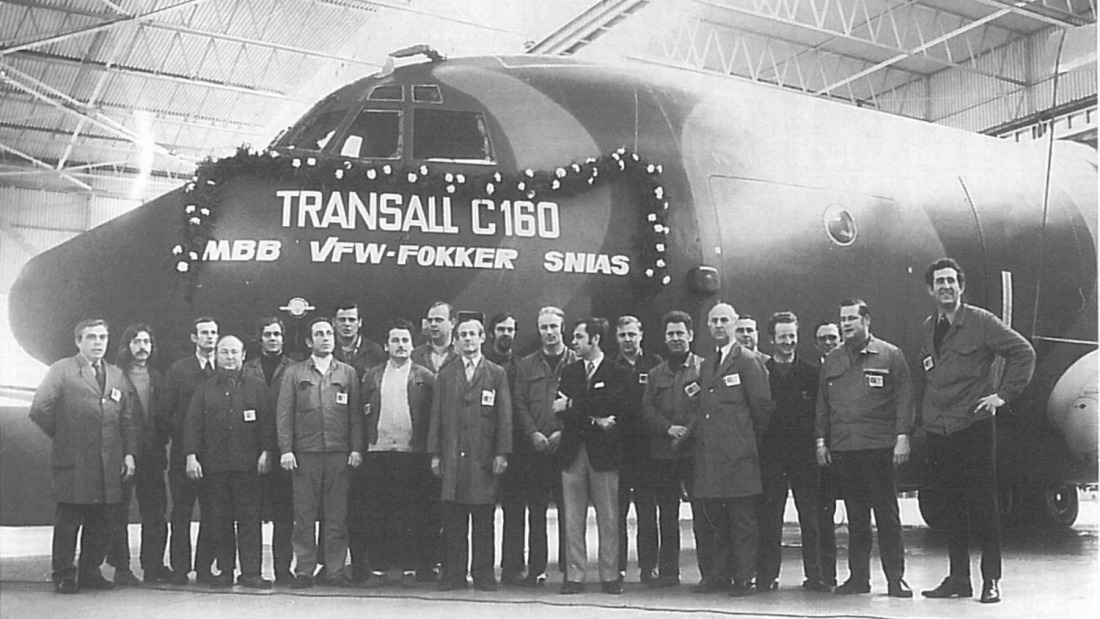
1963
First flight of the Transall transport plane, developed jointly by the French company Nord Aviation and the German companies Weser Flugzeugbau, Hamburger Flugzeugbau and W. Blume – Leichtbau und Flugtechnik: a collaborative French/German project. The company Weser Flugzeugbau was the project manager for the development phase. In the construction phase, in Bremen, fuselages, doors and loading doors were manufactured, among other things. This was the first aircraft model of this type to be developed in multi-national cooperation, in Europe. It was a continuation of the model in which work was distributed among European countries.
In the same year, Focke-Wulf and Weser Flugzeugbau merged to Vereinigte Flugtechnische Werke (VFW), to enable them to expand commercially. Focke-Wulf had previously got into a commercially precarious situation due to a lack of successfully completed projects of its own.
1969
Together with the Dutch company Fokker, VFW founded a joint venture called VFW-Fokker. It only existed for a few years, being dissolved again in 1980. Alongside space travel projects, the objective of the cooperation was to work together on the VFW 614 passenger aircraft. The Free Hanseatic City of Bremen also involved itself in the project and also in Messerschmitt Bölkow-Blohm, the South German company group.
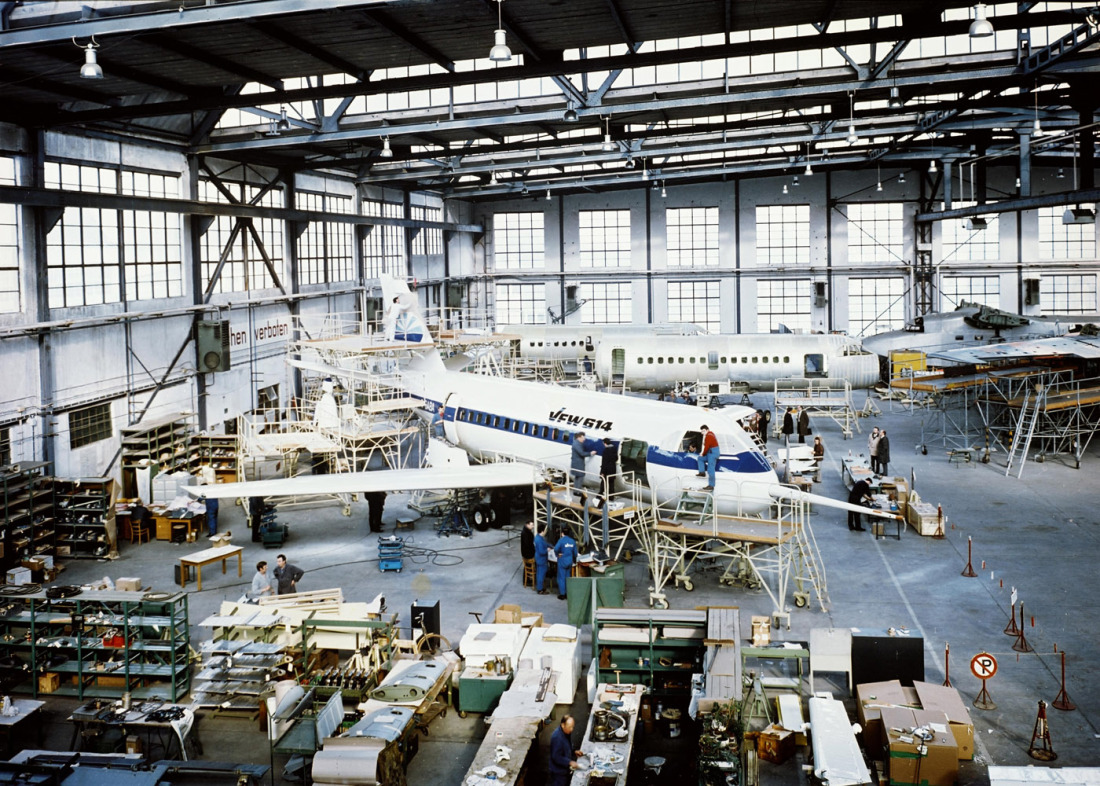
1971
First flight of the VFW-Fokker 614 prototype. It was intended that the short-haul passenger aircraft with the striking engines on top of its wings should bring new life to the German civilian aviation industry, which was heavily reliant on military projects and therefore public funding. However, only 19 machines were built in total, due to a lack of commercial interest from airlines, so the project was a failure.
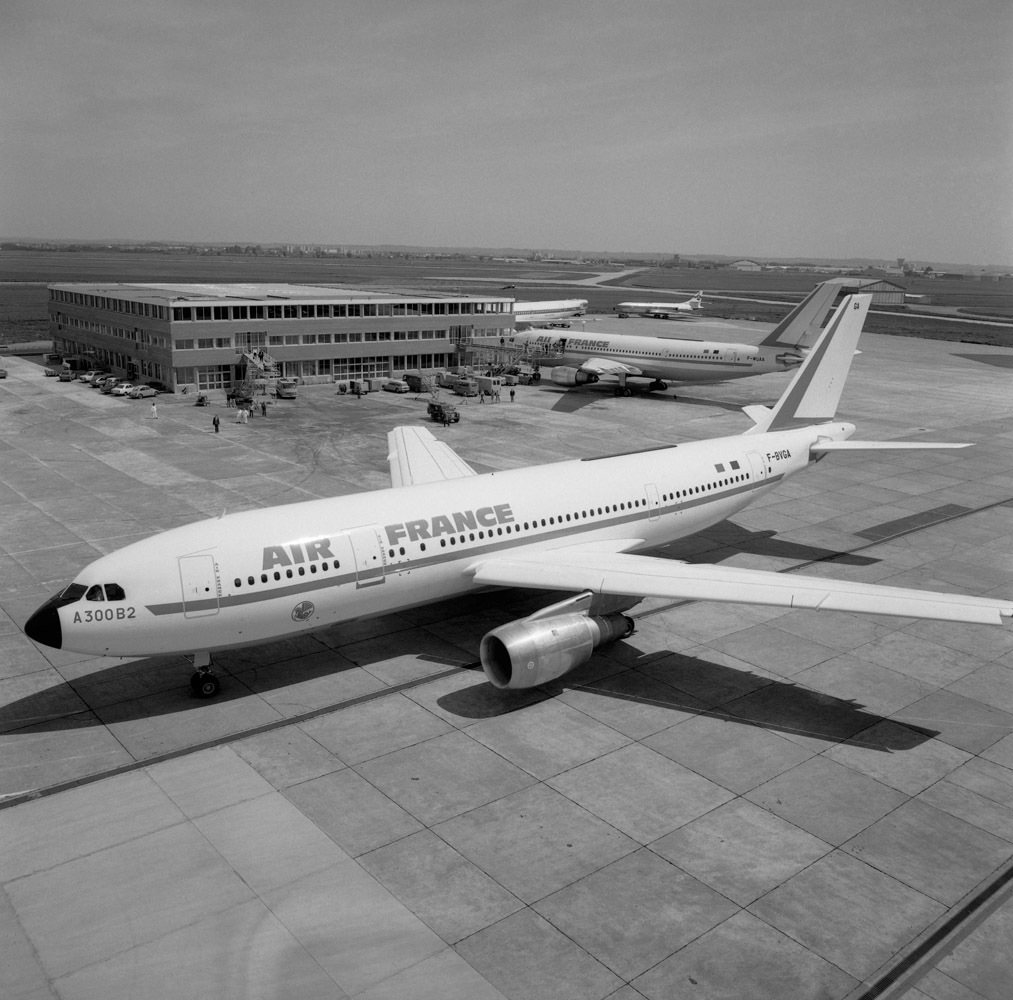
1972
First flight of the Airbus A300 prototype. This was the result of around seven years in which the idea of a European civilian aviation project was born, efforts were made to win political support and, finally, project implementation began. VFW was part of a national consortium in the newly founded "Arbeitsgemeinschaft Airbus" (Airbus Consortium), which came to Germany for the first time in 1965. In the same year, French and British companies joined in. The working model of the European internal consortium, which had already been successfully trialled, was applied once again.
1980
VFW became part of the Southern German MBB Messerschmitt Bölkow-Blohm group, the end of an era for independent aircraft construction companies in Bremen. This was the result of additional efforts to consolidate the German aviation industry in the 1970s. The aim was to protect the competitive position of Germany's industrial landscape and do away with overcapacities.
Background: although Airbus production was slowly progressing and increasing, the German manufacturers VFW-Fokker and MBB otherwise had to struggle with failed projects or low order volumes. VFW-Fokker had got into a commercially difficult situation. The efforts to consolidate the German aviation industry had been enforced by the German Government and the German Federal States which had provided industrial/political development aid for projects (such as the VFW 614, and Airbus) with funding programmes and loans, again and again, and now believed that the future lay in Airbus production.
1982
First flight of the second Airbus model, the A310. The expertise of Bremen-based companies in high-lift systems, i.e. flaps and leading-edge slats, had already made itself evident in the early days of Airbus development, and that expertise is still in place today.
1987
First flight of the A320, founder of Airbus's most successful aircraft family to date. As the years passed, Bremen became a centre for the development of the company's high-lift systems. Alongside the production of flaps, Bremen was able to maintain and build on its expertise, including in research and development.
1989
MBB became part of DASA (Deutsche Aerospace Aktiengesellschaft), a subsidiary of Daimler-Benz, today called Mercedes-Benz Group AG.
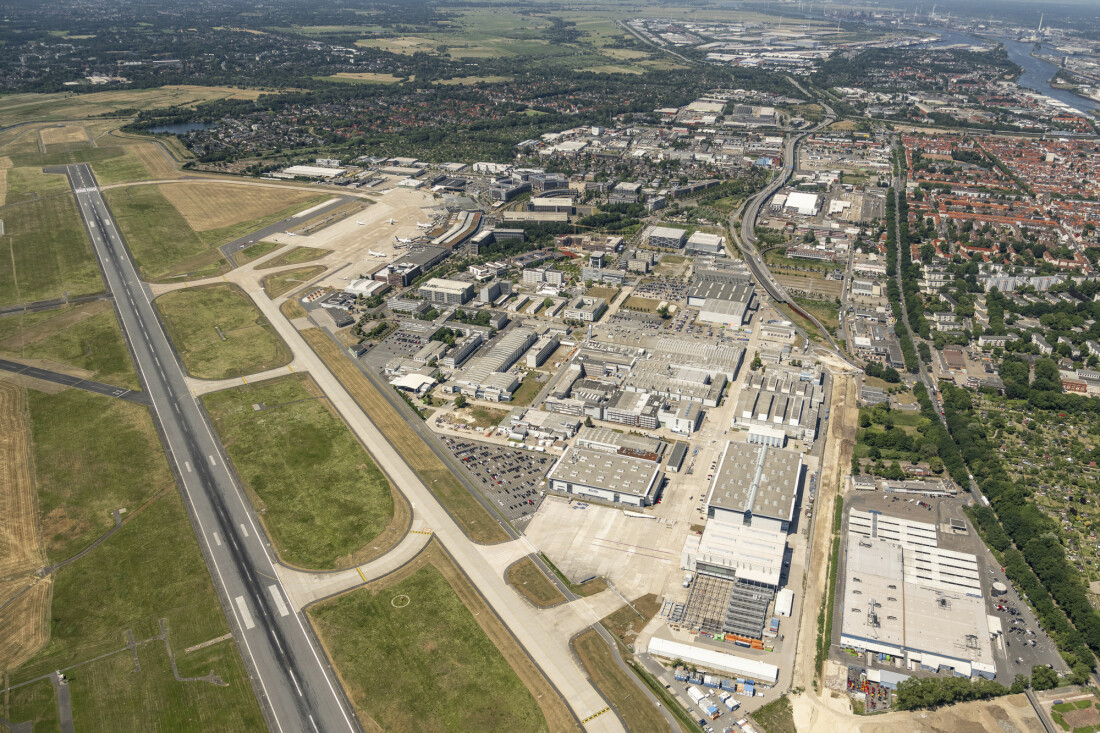
1994
The development work for Bremen Airport City began. In the next ten years, a completely new industrial estate was created here, in close proximity to the airport. To date, 600 companies with 21,500 employees have located themselves here. Many of them work and conduct research in the aviation and aerospace sector, so they benefit from being close to the Bremen Airbus site, which can be reached on foot. In addition to industrial companies, there are also many research institutes that form a research environment.
2000
The Airbus Consortium (consisting of shareholders from the different countries involved) created the limited company European Aeronautic Defence and Space (EADS) which brought together all the divisions of the rapidly growing Airbus Group. The German company DASA, the French company Aérospatiale-Matra and the Spanish company CASA, were all integrated in this consortium. Until that point, these had been independent companies. In 2002, EADS also acquired the British 20% share in Airbus which had previously been held by the British company BAE Systems. EADS was renamed Airbus Group in 2014 and then simply Airbus. Germany and some German Federal States, Spain and France had shares in the Airbus group through shareholdings. The Federal State of Bremen also acquired a shareholding via Bremeninvest. Daimler-Benz had sold off its shares by 2013.
2007
The Deutsche Zentrum für Luft- und Raumfahrt (the German Aerospace Center), DLR, founded the first of four institutes so far, in the Hanseatic city of Bremen. This underlined Bremen's strong involvement in research and development in avionic technology.
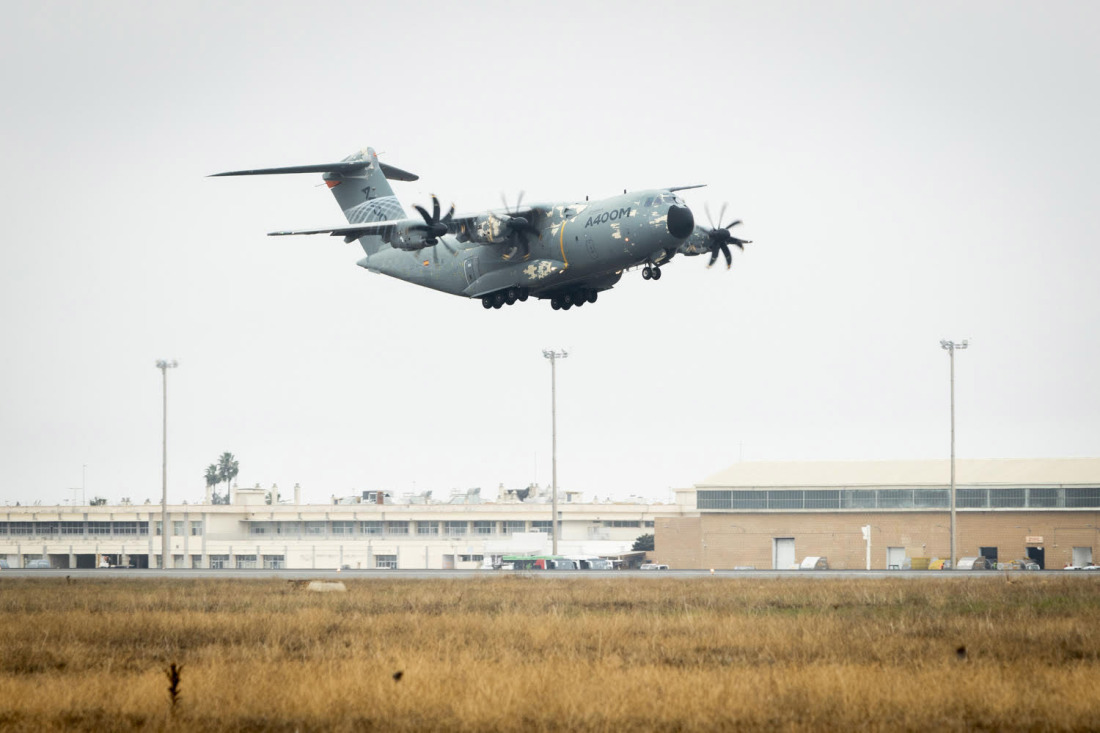
2009
First flight of the A400M. The A400M was a military transport plane and successor to the Transall. Its fuselage was developed and assembled in Bremen. In addition, the engineers designed the freight-loading system there.
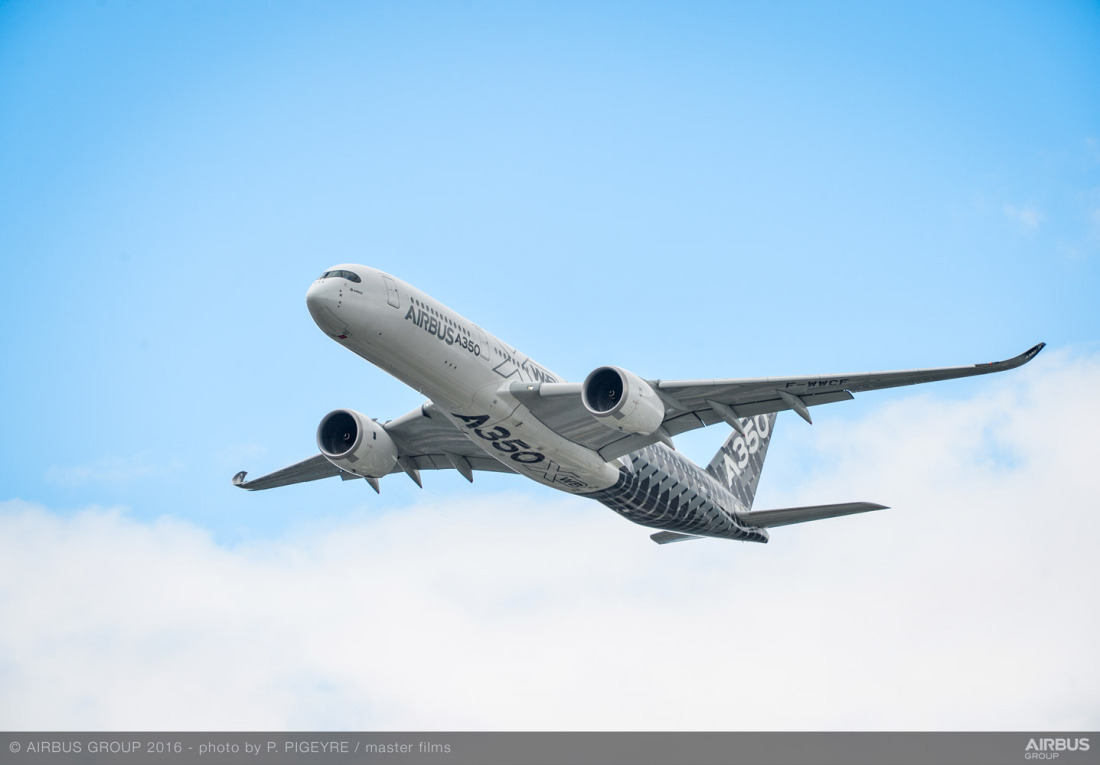
2013
First flight of the new A350 long-haul aircraft which was especially economical and was to replace many older Airbus models. The aircraft's wings were fitted out in Bremen before being moved to their final assembly point. The wings of the older model A330 were also fitted out there.
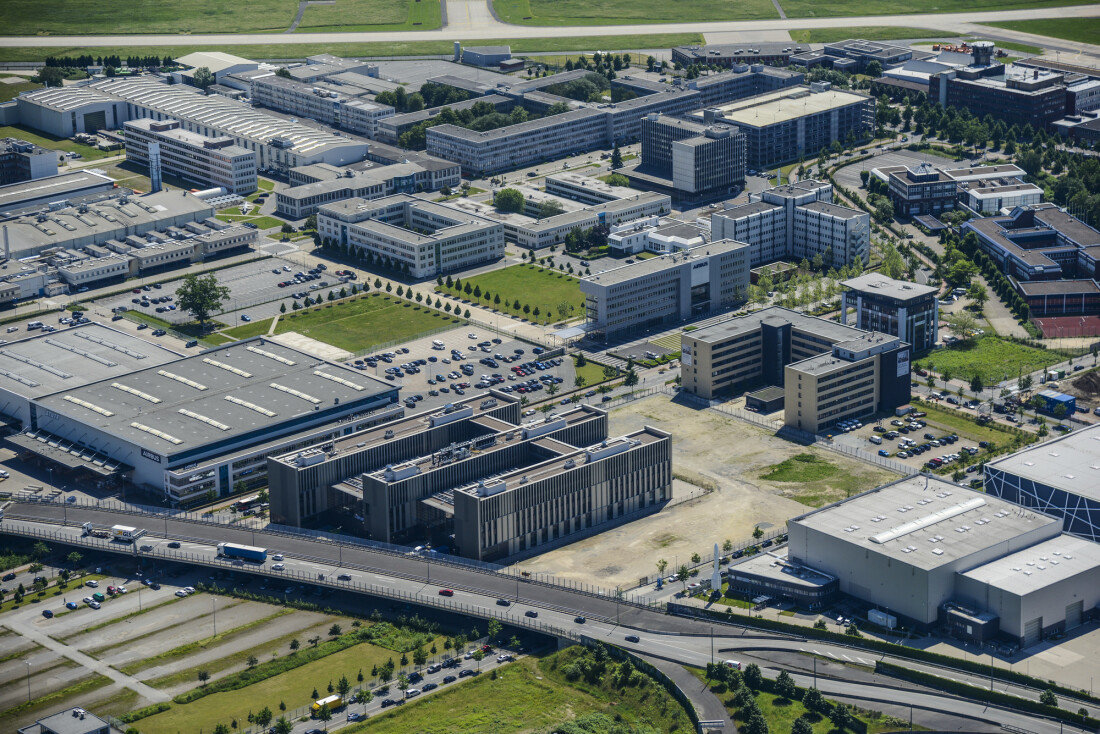
2019
Opening of ECOMAT. The research and technology centre in Bremen Airport City employed around 500 scientists involved with topics relating to climate-neutral flight, lightweight construction, surface technologies and digital aircraft development. Science and industry work together here, on research projects, in a building that has both office spaces and laboratories.
2023
In Bremen, Airbus launched the ZeroE Development Centre which is involved with new engine technologies for the sustainable and low-emission future of aviation.
Today
Aircraft construction is one of the most important branches of industry in the Hanseatic city. Bremen is closely integrated in the European research and manufacturing infrastructure. It is Germany's second-largest avionics location, at which around 12,000 people are employed in the aviation and aerospace industry sector. At Airbus alone, there are around 4,500 staff who are working on innovations and building the aircraft of tomorrow.
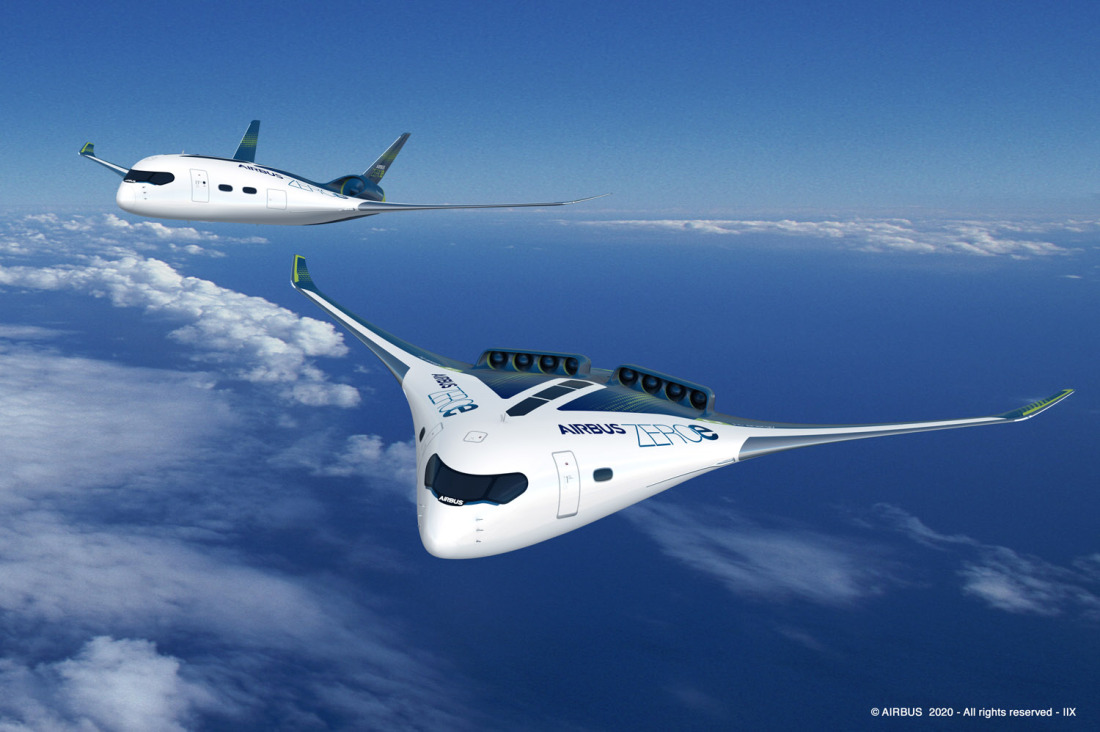
The future of aviation in Bremen
2025
Restructuring measures in the Airbus group lead to new types of work in Bremen. While the majority of the manufacturing stages for the inner landing flaps for the A321 will take place in Bremen, the wings for the A330 will be fitted out in the United Kingdom. Bremen will concentrate on high-lift systems.
2035
This is the year in which the first commercial Airbus model capable of low-emission flight will take off. To achieve this, research into using hydrogen for aviation is currently under way. This will involve the fundamental restructuring of aircraft construction, with new technologies and manufacturing processes. In Bremen, this is involving a lot of development work and new research units are being created. For example, Airbus is building its Fire Certification and Testing Center which works on the safe handling of hydrogen for avionics applications. In addition, Bremen is implementing its "ECOMAT Hydrogen Campus" to upgrade the previous ECOMAT concept to specialise in hydrogen technologies.
Sources:
- "Ein Jahrhundert Luft- und Raumfahrt in Bremen" (a century of aviation and aerospace in Bremen) by Peter Kuckuk, Hartmut Pophanken and Klaus Schalipp, published by Falkenberg in 2019.
- Deutscher Bundestag (German Parliament):
- Strukturbericht 1969 der Bundesregierung - (German Government structural report for 1969) - 5th legislative period 04.07.1969
- Finanzplan des Bundes 1970 bis 1974- (German federal budget) 1970 to 1974- 6th legislative period 13.09.1970
- Jahresbericht 1968/69 der Bundesregierung zur Luft- und Raumfahrtindustrie Basisprogramm für die deutsche Luft- und Raumfahrtindustrie 1970 bis 1974 (German Government Annual Report 1968/69 concerning the aerospace industry. Foundation programme for the German aerospace industry 1970 to 1974 6th legislative period 16.07.1970
- Basisprogramm für die deutsche Luft- und Raumfahrtindustrie 1974 bis 1978 (Fortschreibung) (Foundation programme for the German aerospace industry 1974 to 1978 (Continuation)) 7th legislative period 13.12.1974
- Thanks also to the Bremer AIRbe e.V. association for their contribution to this article. You will find an even more detailed chronology of the history of flight in Bremener on the association's own website.
- Airbus history: https://www.airbus.com/en/our-history
Previously published in the series "100 years of aircraft construction in Bremen":
Success Stories
The history of space travel in Bremen
Small circle, big impact: With the founding of the “Development Ring North” (ERNO) in July 1961, Bremen began its development into one of the world’s leading spaceflight locations. Even the return of humans to the Moon would hardly be possible without technology from the Hanseatic city.
Learn moreHow a space enthusiast campaigns for women in STEM fiels and Bremen as a space location
How does someone from a small village in Poland end up working on human spaceflight in Bremen? Dr. Anna Chrobry shares her journey through science, passion, and perseverance—and explains why she proudly calls herself a "space girl."
Learn moreVisions for the future of aerospace
From car navigation systems to weather reports - hardly anything works without satellites. They need fuel, but this is often toxic. The Institute of Aerospace Technology at Bremen University of Applied Sciences is researching environmentally friendly alternatives. What the future of space travel could look like.
Learn more
